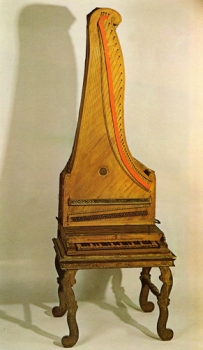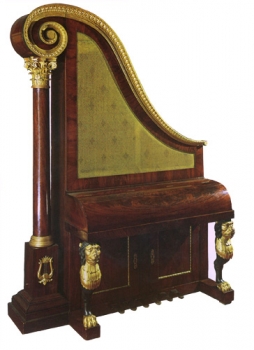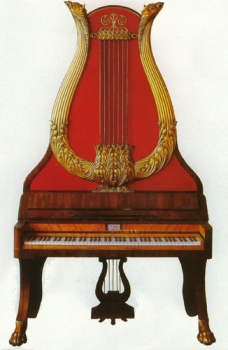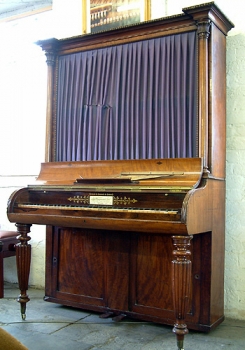Upright grands
Building upright instruments began early: the first instrument of that kind by Domenico del Mela (Firenze Museo del Conservatorio „Luigi Cherubini“) is from 1739 (Abb.1). Like most upright instruments before the mid-19th century it is an upright grand piano! Many instruments of that kind have a frightening appearance for modern viewers. Often they have the dimensions of an "ordinary" grand reaching heights of two meters and more. A typical English upright grand rests on four slim wooden feet and appears to topple over at the slightest touch. Unlike other piano models upright grands are very different from each other according to local tradition- in their heydays from about 1790 to after 1830 every region had "its" typical model. Viennese instruments had a visible grand profile but the top was ornated with a ionic scroll and often a fitting column added - the result soon got the jocular name "giraffe piano." (Abb.2). The typical Berlin model by the specialized workshop Schleip was the "lyra grand" – of symmetrical shape, an ideal complement for any other neoclassicist furniture (Abb.3). English "upright grands“ (Abb.4) usually had a bookcase shape since the free space on the descant side indeed could be equipped with shelves, for scores asf (what might not have improved balance of these grands).
All piano actions of these uprights suffered the same problem that had worried makers of the clavicytherium. Hammers did not strike strings from below and returned back only slowly by gravity. To help this flaw complicated mechanisms had to be constructed which made playing heavier. Another practical problem was tuning: Either the access to the pin block was hampered or blocked by the keyboard or, if the block was on top of the instrument, the pins were almost out of reach (see below).
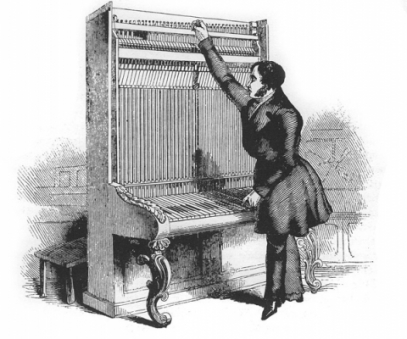
Nonetheless piano making profited from the experience with the "failed" uprights. The modern upright piano ("pianino"), more or less an upright square piano, inherited many of the improvements achieved with upright grands but also some of their flaws any piano action with hammers standing upright has to deal with.
© Greifenberger Institut für Musikinstrumentenkunde | info@greifenberger-institut.de




